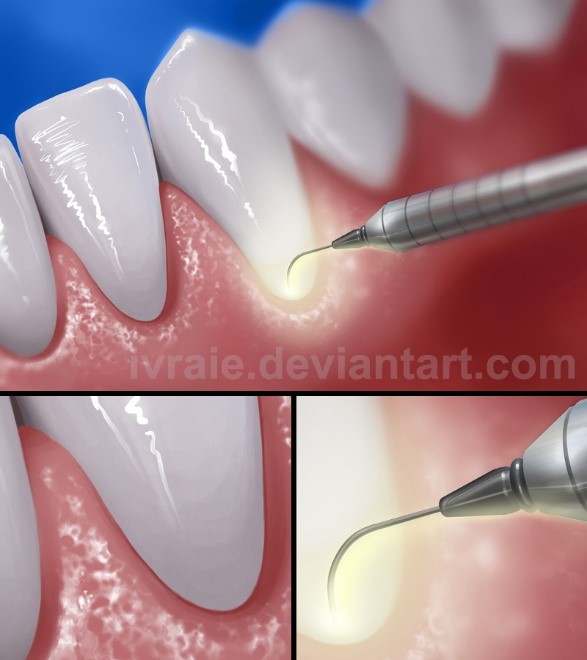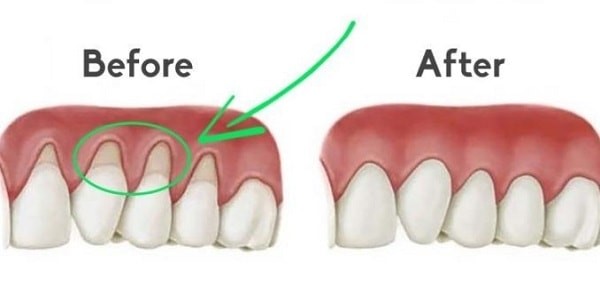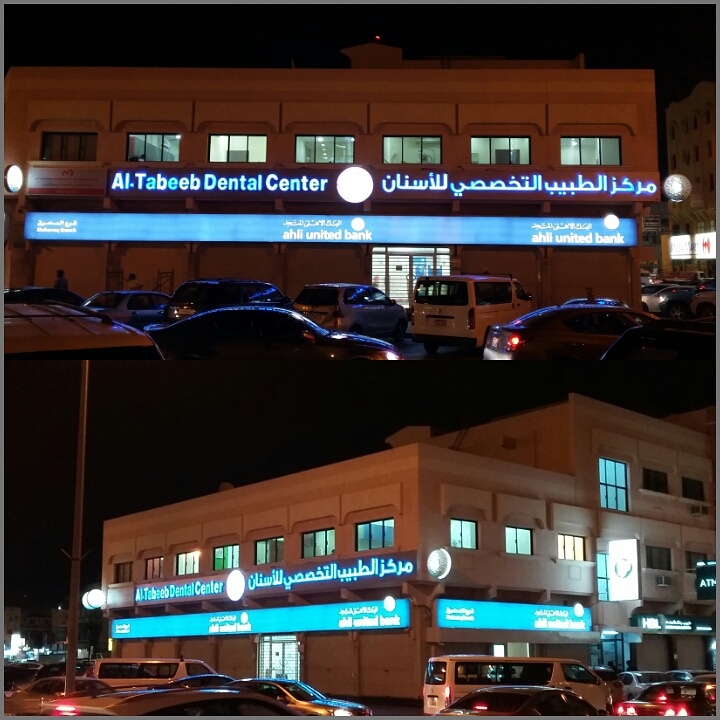Gum Treatment

There are two major stages of periodontal disease: gingivitis and periodontitis. The earlier stage, gingivitis, is a mild form of gum disease caused by plaque build-up around the gum line which causes inflammation of the gums. If you neglect to brush or floss your teeth daily, this plaque build-up will trap bacteria and cause gum disease. Your gums will appear red and swollen, and you could experience bleeding when you brush or floss. If properly treated, it may be reversed.
Left untreated, gingivitis turns into periodontitis. During this more destructive disease stage, the supporting bones and fibres that hold your teeth in place have been irreversibly damaged, as bacteria penetrate the deeper pockets of tissue. Immediate treatment is necessary to prevent further damage and tooth loss.
Gum disease usually progresses slowly and painlessly, meaning it can take years for sufferers to realise there is a problem – but it is easier to treat when it’s caught early.
The best way to avoid or manage gum disease is by practising good oral hygiene and visiting your dentist regularly.

Why do some people suffer from this problem and not others?
Around 15% of the population is susceptible. 3 major factors are thought to be responsible: family history, stress and smoking. Stopping smoking is an important part of reducing the risk of developing the disease. Certain general diseases such as diabetes may also make an individual more susceptible.
What are some risk factors?
You may be at risk for gum disease if any of the following apply to you:
- Tobacco and alcohol use
- Systematic diseases (such as diabetes, heart disease, osteoporosis, cancer)
- Genetics
- Pregnancy
- Stress
- Certain drugs
- Non-surgical Treatments
- Scaling and Root Planing.
- The early stages of gum disease may only require non-surgical treatment. The most well-known type of non-surgical treatment is known as scaling and root planning, a minor procedure involves careful removal of plaque and tartar from the affected gums, and smooth the tooth root to remove any bacterial toxins. During this procedure, the dentist will remove harmful bacteria and irritants from deep beneath your gums to prevent plaque from accumulating again. Most patients will not need any further treatment, although we recommend visiting our hygienists regularly to maintain your oral health.

- Laser Gum Treatment
An innovative technology that can assist non-surgical treatments for gum disease, laser dentistry involves treating the gingival pocket with a narrow, intense beam of light energy at a wavelength that is ideally suited for soft tissue procedures. This light energy removes a tiny amount of diseased tissue, decontaminates any gum pockets and aides in reducing the bacteria associated with the disease.
- Surgical Treatments
- Pocket Depth Reduction
- Periodontal disease damages the gum tissues and bones supporting the tooth, leaving open spaces around the teeth known as ‘pockets’. The larger these pockets are, the easier it is for bacteria to collect inside them, causing more bone and tissue loss. Without treatment, the supportive structure degrades to the point that the tooth either falls out or needs to be removed.
- We can avoid this with a minor procedure to take the harmful bacteria out of these pockets. We fold back the gum tissue, remove the bacteria hiding underneath, as well as the hardened plaque and tartar that have collected. We then secure the gum tissue back in place. We also smooth any irregular surfaces of the damaged bone to limit the areas where bacteria can live, making it easier for your gums to reattach to healthy bone.
- Gum Grafts
- Periodontal disease can cause your gums to recede, exposing the roots of your teeth. As teeth are supposed to be protected by the gum line, when they are exposed, they can be very sensitive and susceptible to decay. Exposed roots can also make your teeth appear longer and have an ageing effect on your appearance.
Gum graft surgery involves taking gum tissue from another part of your mouth – usually your palate – and using it to cover the exposed root, restoring the gum line to its original, healthy location. This can protect the root from decay, lower sensitivity, reduce further recession and bone loss – and make your smile appear more youthful.

- Crown Lengthening
- Gum disease can seriously damage your teeth – but if a tooth is decayed, broken below the gum line or too short, it may not be possible to affix a crown or bridge to restore it. In this case, dental crown lengthening can adjust the gum and bone level, making restoration possible.
- Ridge Augmentation
- Ridge augmentation is a common procedure performed to help recreate the natural contour of the gums. Often, after a tooth is removed, your jawbone no longer needs to support it and will naturally begin to deteriorate and recede. The height and width of the socket, which was supported by the tooth, will begin to shrink after the tooth is removed. This can lead to a gum indentation developing where the tooth used to be.
- Ridge augmentation is a simple procedure that regenerates jaw bone and tissue, to re-establish your natural gum line, giving you an enhanced quality of life and giving you back your beautiful smile.
- Maintenance
- Plaque, a sticky film, continuously forms on tooth surfaces. Once your periodontal treatment has been completed, we recommend you book periodontal cleanings by a dentist regularly.





